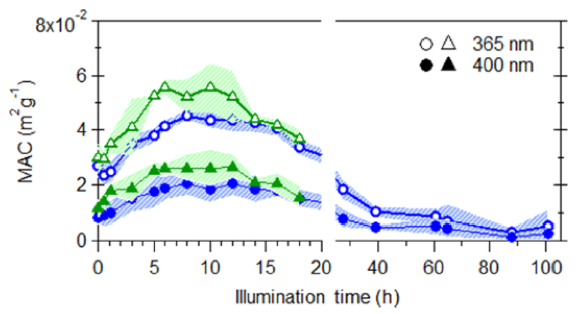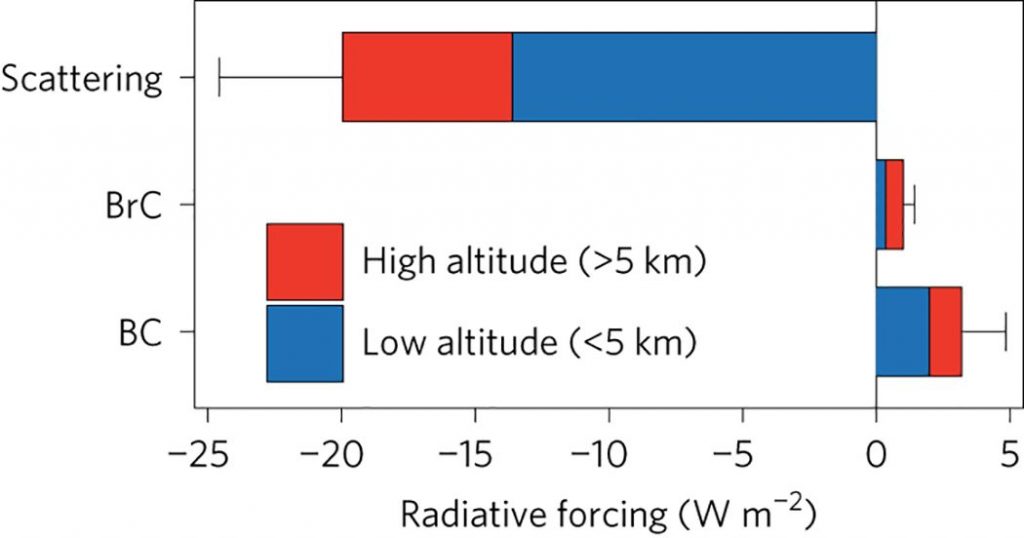Atmospheric organic matter that absorbs ultraviolet and visible radiation (“brown carbon” or BrC) can affect the Earth’s radiative energy balance and affect local photochemistry. Measurements in the laboratory and field are conducted to address critical knowledge gaps regarding their sources, sinks, and optical properties.


Selected references
- Wong et al., Atmos. Chem. Phys., doi:10.5194/acp-19-7319-2019, 2019.
- Zhang et al., Nat. Geosci., doi:10.1038/ngeo2960, 2017.
- Forrester et al., Geophys. Res. Lett., doi:10.1002/2015GL063897, 2015.